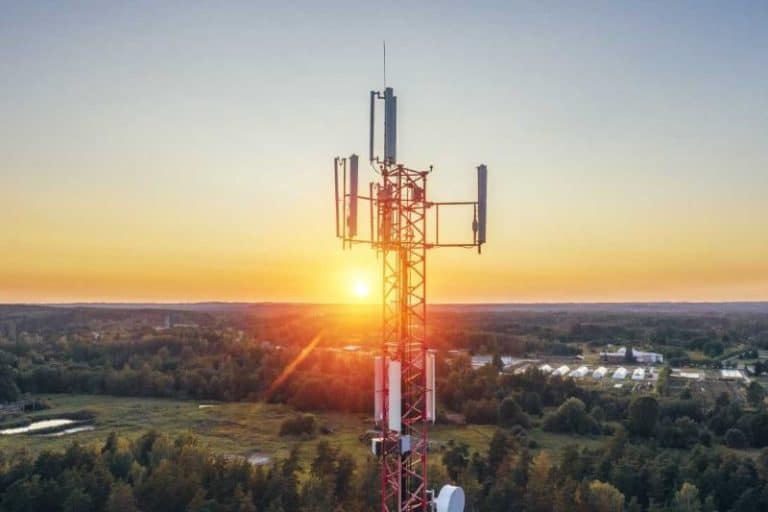If you've ever walked through a town you might have noticed tiny 5G cell towers on the poles of street lights. They look like little boxes, but they're actually broadcasting wireless signals from mobile providers to your phone.
These smaller towers are replacing the larger specially-designed cell towers. Although they're not as visible however, they could cause problems for people.
A of the FCC's Radiation Exposure Thresholds
/connected-city-5c40ccc046e0fb0001545988.png)
The FCC's Radiation Exposure Thresholds define the safe distance that a person can be exposed to electromagnetic radiation from wireless devices. The limits for exposure are based upon scientific research which prove that electromagnetic energy can be harmful to human health.
The absorption rate specific (SAR) is an indicator of the radiofrequency energy taken up by tissues. It's usually 1.6 Watts per kilogram spread over a kilogram of tissue.
Since 5g is able to transmit at higher frequencies, it has the potential to create more energy on the skin and other directly-exposed body areas. This can result in many potential harms, including exacerbated development of skin diseases like dermatitis, skin cancer and cataracts.

Due to the potential for negative effects of 5G radiation, PSU has chosen to set a general localized limits on power density, which is 4mW/cm2 based on the average on 1cm2, and not to exceed 30 minutes, for the entire 5G spectrum at 3000 GHz. This limit for localization is in line with the peak SAR that is spatially averaged at 1.6 W/kg, which is averaged over 1 grams of tissues at six GHz.
The FCC's Maximum Exposure Thresholds
Have you ever used a mobile phone, you're probably aware that the safest range from the tower is around 400 meters away. This is because the transmitting power of cell towers increases drastically the further your location from the tower.
While this sounds like a good idea, the reality is that those living close to towers might be more prone to health issues. For safe distance from cell tower , a 2014 study in India found that those who lived within 50 meters of cell towers experienced significant more health issues than those who lived farther distance from them.
But, the study revealed that those who relocated to areas that were further from cell towers experienced their symptoms return to normal within a couple of days. safe distance from cell tower have also shown that exposure to high levels of radiofrequency electromagnetic fields (EMFs) can cause cancer, brain tumors and other health issues.
This is due to the fact that the RF radiation used in wireless communication, can penetrate the human body's outer layer, called the skin. It is crucial to know because the skin serves as a barrier to protect against mechanical injury, infection by pathogenic microorganisms, and infiltration of toxic substances. The skin is the most important organ of the human body, and is accountable for keeping the integrity of other organs.
safe distance to live from cell phone tower are based upon various assumptions that aren't supported by evidence from science. This includes the false belief that short-term exposures RF radiations are not harmful because of the minimal absorption into body (i.e. thermal heating of tissue).
This assumption does not take into account the greater penetration of ELF parts of the modulated RF signal as well as the effects of short bursts of heat generated by RF waves that are pulsed. These assumptions are not in line with current understanding of the biological consequences of RF radiation, and thus, they should not be considered for health protection exposure standards.
In addition there is the fact that both ICNIRP and FCC restrict its maximum levels of radiation exposure for local peak SARs, based on the peak frequency of absorption (psSAR) which is not a reliable dosimetric instrument to determine the degree of exposure to RF radiation. In particular the psSAR tool is not accurate when frequencies exceed 6 GHz. In addition, psSAR is not been tested for RF radiation exposed to other environmental agents such as sunlight. get more info of RF radiation and other environmental agents may cause synergistic or antagonistic impacts. This could result in the risk of having adverse health effects. For example, co-exposure to RF radiation with sunlight may increase the risk of developing skin cancer, as well as aggravate other skin conditions like acne.
